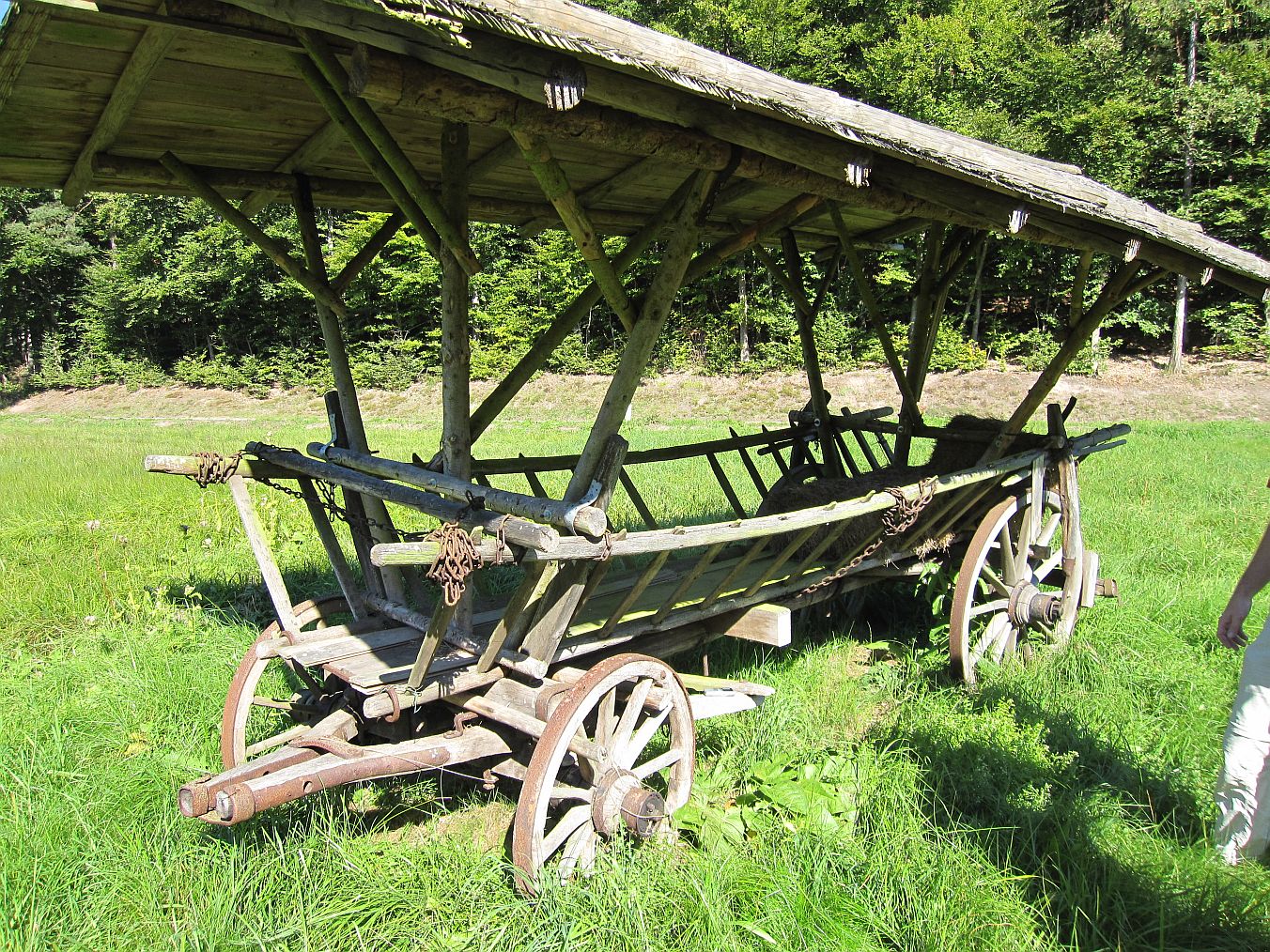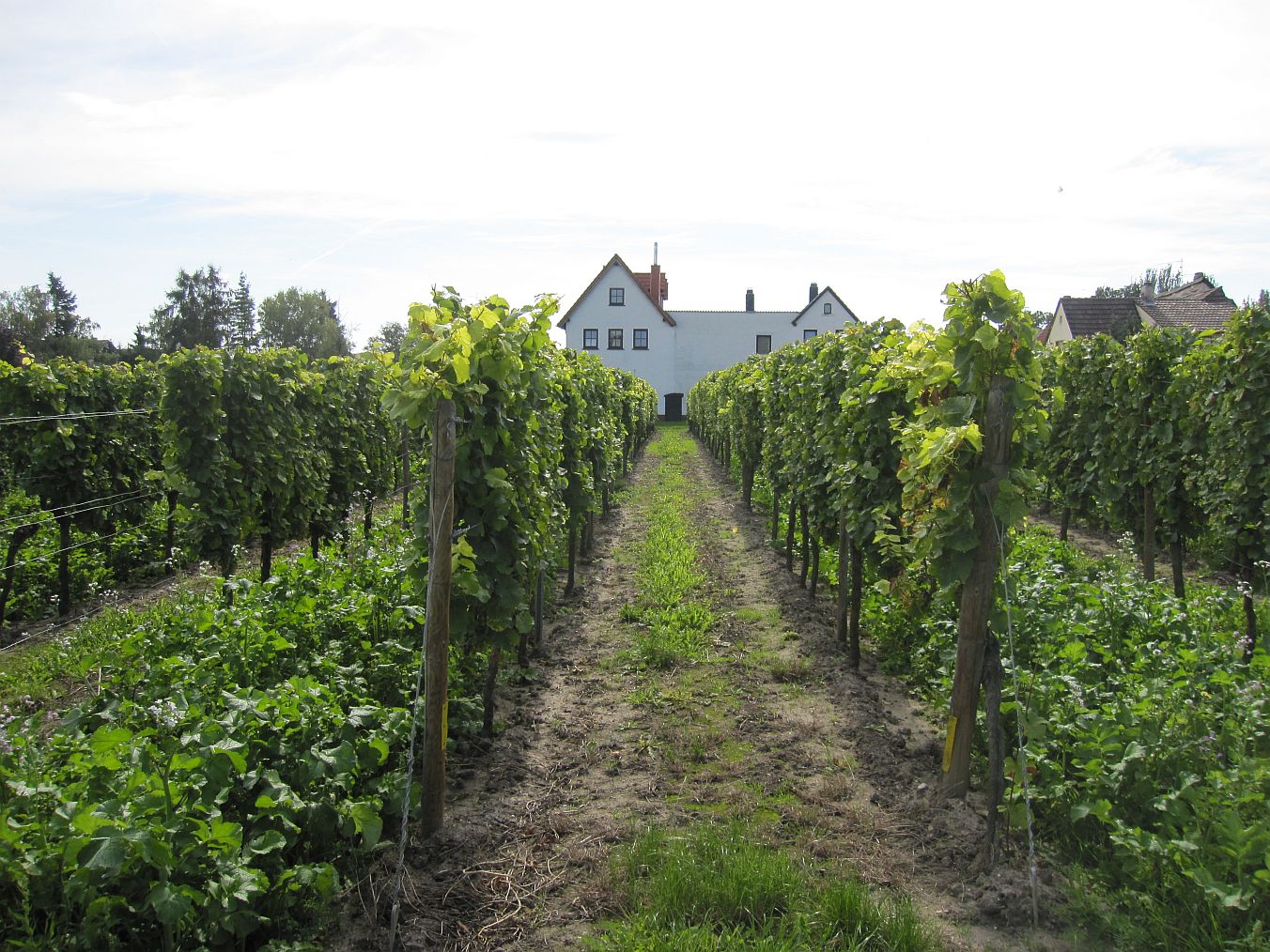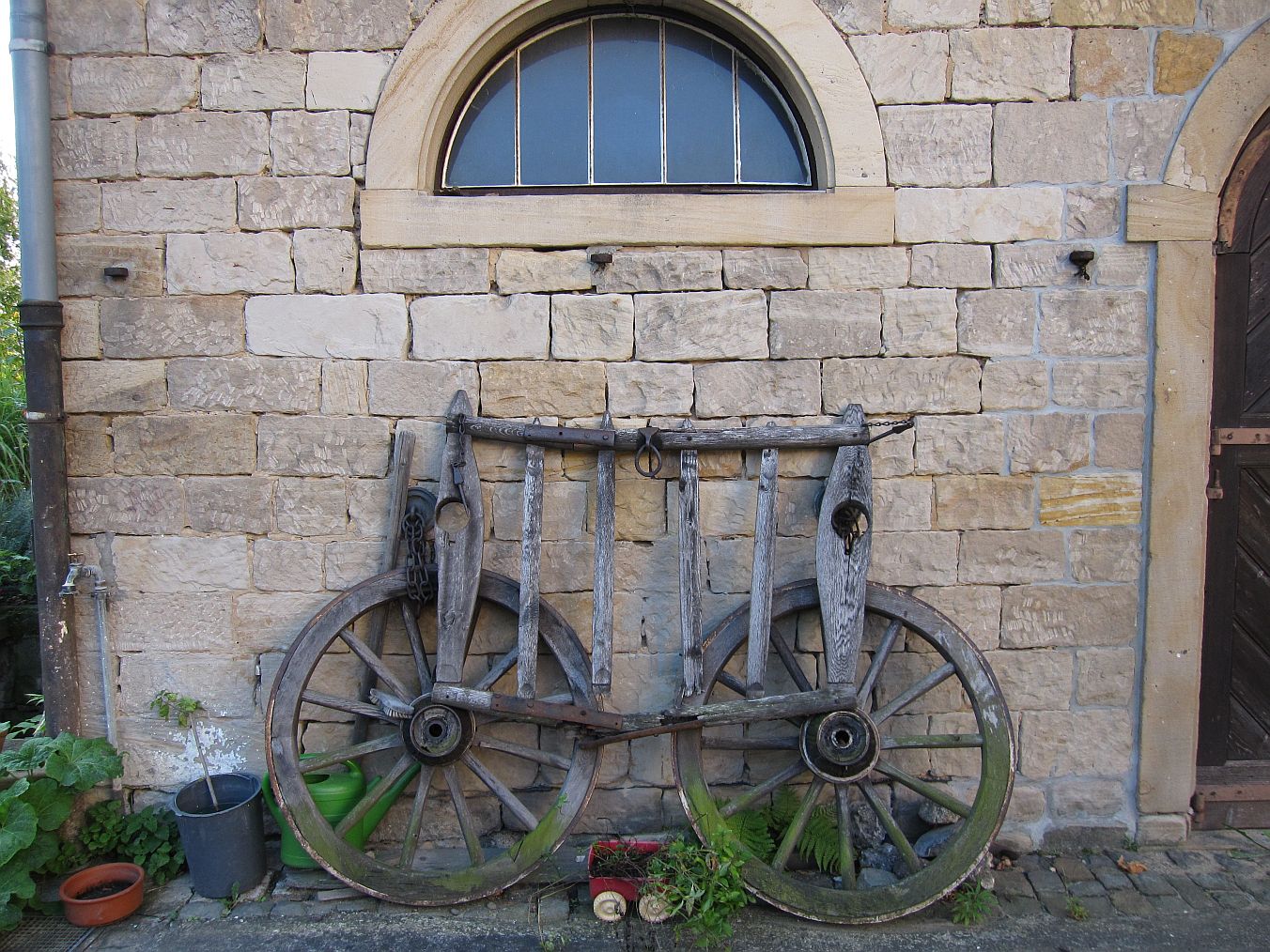A couple of years ago on the way to the Bewartstein Castle (near Erlenbach in the southern Palatinate forest), my cousin and guide Matthias got excited at the sight of this wagon sitting in a meadow by the side of the road.
“Oh look, it’s an old Leiterwagen,” he said, careening the Opel over to the shoulder. “I want you to see it. It was once very common in our region. The design is very clever– it can be used as one wagon with four wheels, or pulled apart into two separate drays. When it wasn’t in use, they would collapse it for easy storage.”
This Leiterwagen appears to be from the 19th century. Note the iron tires, iron fittings and chains, no doubt pounded into place by the village blacksmith. These wagons could haul hay or timber. With boards fitted over the side ladders, they hauled manure to the fields. This one is more elaborate for its covered top — most were left open to the air. The sleekness of the design was important for fitting the wagons down narrow village streets.
and grape rows.
At my relatives’ house in Freinsheim, they still keep their Leiterwagen, mainly as ornamentation.
In the New World, economy of space was not so important, so ladder wagons did not come into vogue. It seems the heavy-duty drays, Prairie Schooners, even the massive Conestogas (precursors to semi-trucks) were the wagons of choice. At the Colonial Williamsburg web site, I came across this slide show about early American wagons.




